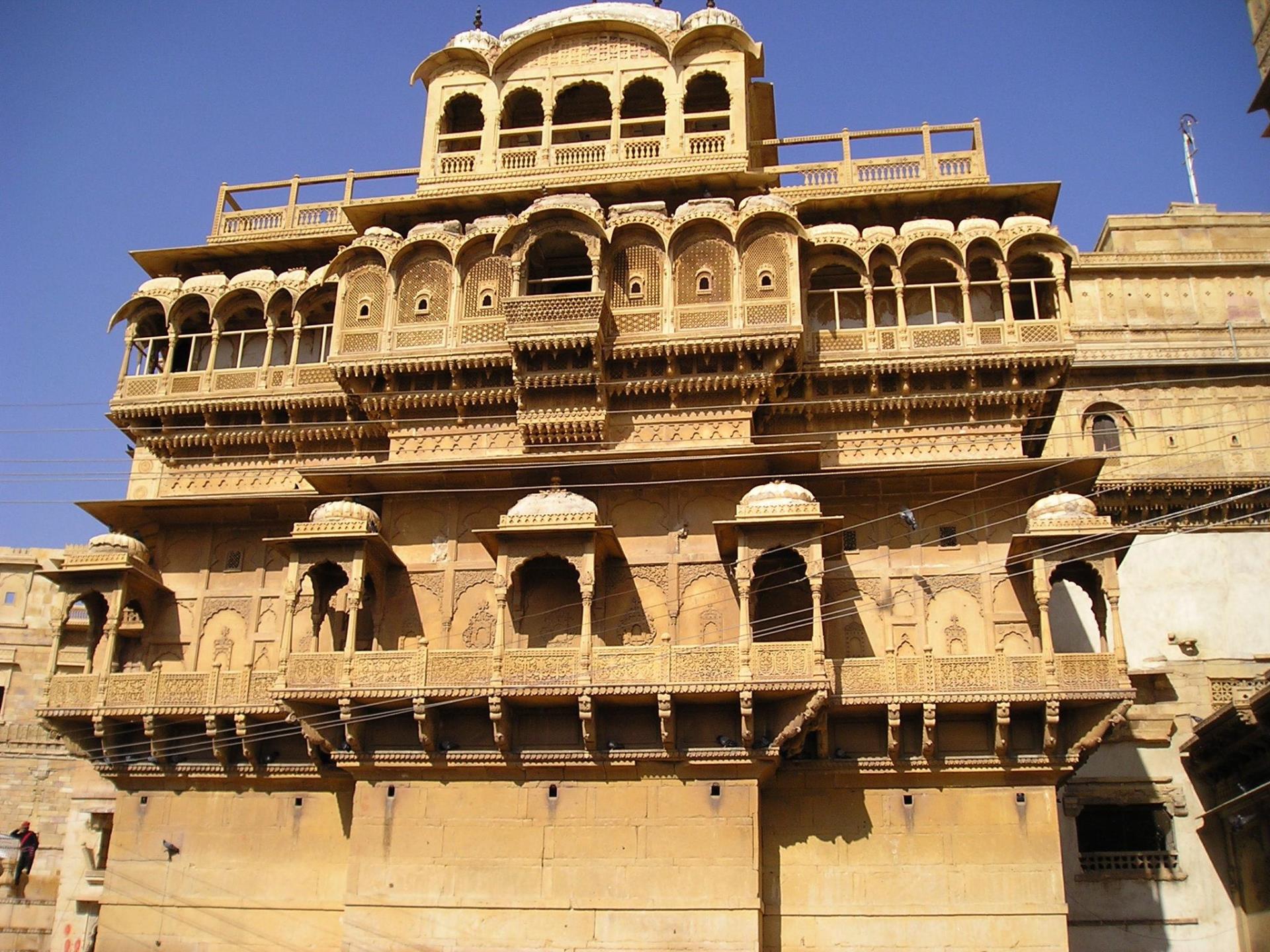
Sorry, we couldn't find anything that matches your search.
Destination

Famous Places to Explore in Hyderabad
A vibrant city with the imposing...

Raipur Tourist Places | Best Place to Visit
The stronghold of several erstwhile...

Ahmedabad
Declared as India's first UNESCO World...
#
Osian
Located around 240 km from Jaisalmer, Osian is an ancient desert town that is dotted with temples and architectural marvels. The main attraction is the Surya (Sun) Temple, dedicated to the Sun God. It also houses idols of Goddess Durga and Lord Ganesha. On the ceiling of the temple you can see intricate carvings of serpents that are coiled around lotus flowers, which are truly awe-inspiring. Other tourist attractions include Harihara Temple, Sachiya Mata Temple and a Jain temple dedicated to Lord Mahavira.

Pokhran
The heritage city of Pokhran lies at the heart of the Thar desert, about 110 km east of Jaisalmer. Literally translated, it means a place of five mirages, and is bound by five big salt rocks. Speckled with royal havelis, ancient temples and grand structures, Pokhran remains suspended in time. The main attraction is the Pokhran Fort, which was the citadel of the Champawat Rathores, the mighty Rajput nobles of Marwar.
The fort has now been converted into a heritage hotel with a museum having an interesting collection of local handicrafts and artistry. Tourists can also visit the small village of Ramdevra, famous for its sacred temple, which is said to be the final resting place of Baba Ramdevji, a much revered 14th century saint who Hindus regard to be an incarnation of Lord Krishna. Between August and September, a large fair known as Ramdevra Fair attracts thousands of devotees from across the state, who travel to the temple to pay their respects to the deity. Pokhran is widely known for the laboratory/underground testing facility that supervised the 1988 nuclear tests after which India was declared a full-fledged nuclear state.

Tanot Mata Temple
This famous shrine, which gained nation-wide renown during the India-Pakistan war of 1971, is a must-visit site in Jaisalmer. Dedicated to Tanot Mata, believed to be an avatar of Hinglaj Mata, the temple lies in close proximity to the Longewala border between the two countries. Legend has it that during the battle when thousands of bombs were being shelled, no bomb that fell near the temple diffused, thus protecting the locals and soldiers. Tourists can also visit the adjoining museum, which houses artefacts from the time of war. The temple is maintained by the Border Security Force of India. The area also boasts rows of windmills that add to the quaintness of the area. The temple lies about 150 km from Jaisalmer.

Barmer
Around 155 km away from Jaisalmer, lies the quaint and serene desert town of Barmer. It is flanked by Jaisalmer in the north, Jodhpur on the east and shares a border with Pakistan in the west. It is a part of the four largest districts that make up the Thar desert and is best known for its hand block printing industry, wood carving, pottery, colourfully embroidered traditional Rajasthani costumes and ajrak prints. About 35 km away from Barmer, lie a group of five architecturally significant temples of the erstwhile Kiradu town. The Someshwara Temple, with a multi-tiered spire, is the most impressive. Barmer is also home to the Luni river, which travels about 500 km and finally merges with the marshy land of Rann of Kutch.
The Mallinath Cattle Festival, held annually in the Tilwara village as a tribute to Rawal Mallinath, the founder of the Mallani Pargana, a Rajput settlement, is a major draw. Another popular attraction is the Barmer Fort, also called Barmer Garh, which was built in 1552 AD on a hillock in present day Barmer. Two important temples namely, the Jogmaya Devi (Garh Mandir) at a height of 1,383 ft and the Nagnechi Mata Temple situated at a height of 500 ft were constructed to seek the blessings of the gods for the fort's protection. Several festivals, especially during the Navratri (a holy nine-day festival) season, are hosted here.








